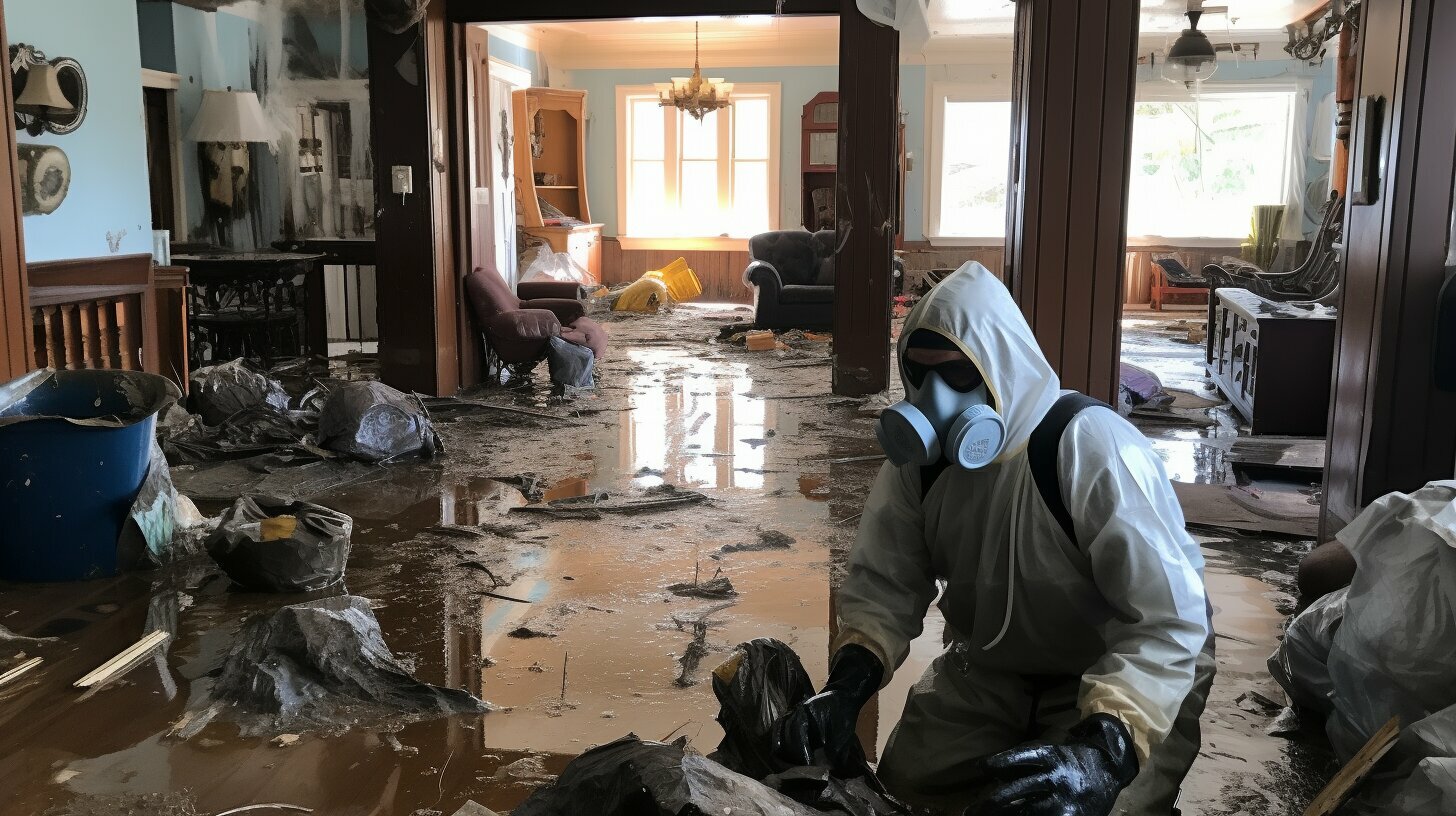Did you know that humidity over 60% can cause mold and allergens to grow? This is why it’s so important to manage moisture after a flood. Flooding is a common disaster in the U.S. and can harm your health and home if not dealt with right away.
It’s key to clean up flood water quickly to prevent damage and health problems like breathing issues from mold. Experts suggest opening windows and using fans to dry your home. High-capacity dehumidifiers, like Santa Fe models, can also help dry your home faster. They remove more moisture than regular dehumidifiers.
This article will show you how to remove moisture from your home after a flood. We’ll help you protect your home and prevent mold.
Key Takeaways
- High humidity levels above 60% can stimulate the growth of mold and other allergens, highlighting the importance of flood water cleanup.
- Opening windows and using fans can significantly aid in drying out a flooded house.
- High-capacity dehumidifiers, such as Santa Fe units, are effective at removing excess moisture quickly.
- Mold prevention after flooding is key and starts with using dehumidifiers with high-efficiency MERV 13 air filtration.
- Immediate action within 24 to 48 hours is essential to prevent mold growth and further damage.
Initial Steps to Take After a Flood
After a flood, it’s important to act fast and know what to do. First, make sure everyone is safe. Then, document the damage well and call your insurance right away. These steps help with fixing the damage and getting help for cleanup.
Ensuring Safety
First, keep everyone safe. Don’t touch floodwater because it can be dirty and harmful. Wear gloves, clothes, and boots to protect yourself.
Be careful around electrical dangers. Stay away from downed power lines, at least 10 meters. Before going into a flooded house, check if it’s safe. People with health issues should avoid moldy places.
Use generators outside to avoid poisoning from carbon monoxide.
Documenting Damage
It’s key to document the damage well for insurance claims. Take photos and notes of the damage. Do this within 24 hours, as insurance usually doesn’t cover damage reported later.
Include details like what’s damaged, like walls and belongings. The CDC says to remove wet drywall and insulation to stop mold. Mold can start in 24 to 48 hours.
Good documentation helps with insurance claims and cleanup plans. Keep your insurance updated with new info.
Contacting Insurance Company
Next, call your insurance to start the claims process. Give them all your documentation. This makes things easier and faster.
Many policies have a short time to report damage. Look into groups is good for HOA communities.
Know your insurance policy well. Many policies don’t cover flood damage. Talk clearly with your adjuster about the damage and follow their advice.
By acting quickly after a flood, you can lessen damage and health risks. This helps you get back to normal faster with the help of professionals.
How do you get moisture out of a house after a flood?
After a flood, getting rid of moisture is key to stop mold and keep the house strong. Using the right tools and methods is important for drying out the house.
Airing Out the Space
First, open windows and use fans. This helps get rid of moisture quickly. It lowers humidity and speeds up drying.
Utilizing Dehumidifiers and Fans
Dehumidifiers are vital for drying out the house fast. They pull moisture from the air. Air movers can cut drying time by up to 75% compared to just air drying.
Removing Water-Damaged Items
Quickly getting rid of wet items is important. Items that dry in 48 hours might be saved. This fast action helps stop mold and mildew.
Pumping and Vacuuming Water
Pumps and wet/dry vacuums are great for removing standing water. For big jobs, pros are often needed. A wet/dry vacuum helps get rid of extra water. This makes the space ready for more drying.
Using these methods and ensuring proper drying helps homeowners recover after a flood. Acting fast can lessen damage and make the home safer and drier.
Conclusion
Fixing a home after a flood is a big job that needs quick action and the right plan. It’s key to stay safe and record any damage first. Acting fast in the first 48 hours can stop mold and save your home from more harm.
Using fans and dehumidifiers is a smart way to dry out your home. These tools keep humidity low and stop mold from growing. Also, putting desiccants like silica gel in damp spots helps soak up moisture.
For big floods, getting help from pros like Green Genie is wise. They use special tools like submersible pumps and truck-mounted extractors to clean up fast.
Using hands-on methods and tools that find hidden moisture is also important. Heating your home and using air movers can help dry out walls and floors faster. In the end, fixing your home after a flood needs quick action, the right tools, and sometimes expert advice to keep it safe and healthy.







